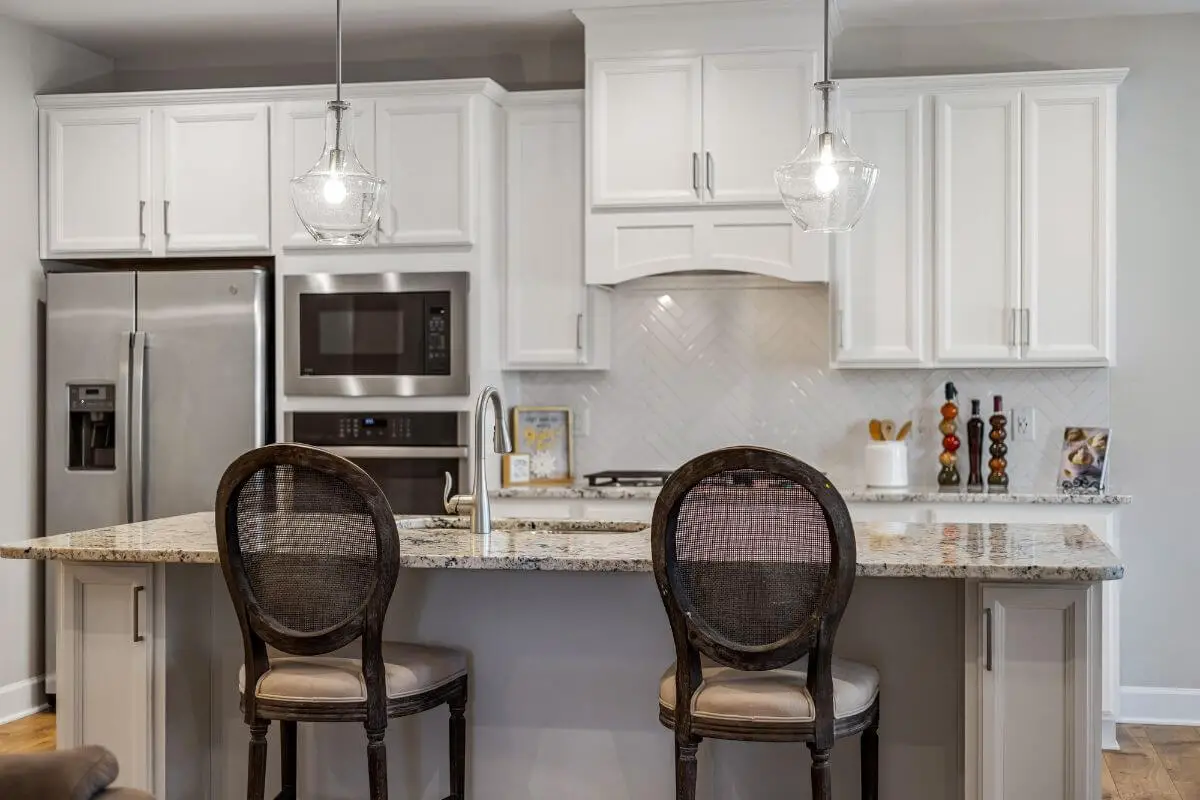Introduction
When it comes to kitchen cabinets, there are countless design options available, each offering its own unique aesthetic appeal. One particular design element that often comes into consideration is crown molding. Cabinets with crown molding can add a touch of elegance and sophistication to your kitchen, while cabinets without it offer a more minimalist and streamlined look. In this article, we will explore the differences between cabinets with crown molding and cabinets without it, helping you make an informed decision that suits your personal style and home decor.
1. What is Crown Molding?
Crown molding refers to a decorative trim that is installed at the top of wall cabinets or kitchen cabinetry. It is designed to bridge the gap between the wall and the upper edge of the cabinets, adding a visually appealing transition and finishing touch.
2. The Benefits of Cabinets with Crown Molding
2.1 Enhanced Aesthetic Appeal
Cabinets with crown molding exude a classic and timeless charm. The addition of crown molding can elevate the overall look of your kitchen, giving it a more upscale and sophisticated appearance. The intricate details and decorative elements of crown molding can contribute to a sense of luxury and refinement in your space.
2.2 Concealing Gaps and Imperfections
One practical advantage of cabinets with crown molding is their ability to hide gaps and imperfections between the wall and the upper cabinets. This can be particularly useful in older homes or those with uneven walls, providing a seamless and polished look to your kitchen cabinetry.
2.3 Heightened Visual Impact
Crown molding has the power to draw the eye upward, creating a sense of verticality and spaciousness. This effect can be especially beneficial in kitchens with low ceilings, as it helps to visually elongate the room and create an illusion of greater height.
2.4 Customization Options
Cabinets with crown molding offer a wide range of customization options. From choosing the style and size of the crown molding to selecting the material and finish that complements your kitchen decor, you have the freedom to personalize your cabinets and create a unique look that aligns with your personal taste.
3. The Advantages of Cabinets without Crown Molding
3.1 Simplicity and Modernity
If you prefer a clean and contemporary aesthetic, cabinets without crown molding may be the right choice for you. Without the additional trim, these cabinets offer a sleek and streamlined appearance that can contribute to a modern and minimalist design style.
3.2 Ease of Cleaning and Maintenance
Cabinets without crown molding are generally easier to clean and maintain. Without the presence of intricate molding details, you can easily wipe down the cabinets and remove any dust or debris that may accumulate over time.
3.3 Cost-Effectiveness
Cabinets without crown molding are often more budget-friendly compared to their counterparts with crown molding. If you are working within a limited budget or seeking cost-effective options for your kitchen renovation, cabinets without crown molding can be a more affordable choice.
3.4 Versatility in Design
Without the constraint of crown molding, cabinets without it offer greater versatility in design. You have the freedom to experiment with different cabinet door styles, finishes, and hardware, allowing you to create a custom look that perfectly suits your kitchen’s overall aesthetic.
4. Factors to Consider When Choosing Between Cabinets with Crown Molding and Without
4.1 Overall Kitchen Style
Consider the overall style you wish to achieve in your kitchen. If you lean towards a traditional or transitional design, cabinets with crown molding can enhance the desired look. For a modern or contemporary style, cabinets without crown molding might be a better fit.
4.2 Ceiling Height
Take into account the height of your kitchen ceiling. If you have higher ceilings, cabinets with crown molding can help fill the vertical space and create a more balanced and visually appealing composition. In contrast, if your ceilings are low, cabinets without crown molding can avoid overcrowding the room.
4.3 Budget
Evaluate your budget for the kitchen remodeling project. If you have budget constraints, cabinets without crown molding can provide a cost-effective solution without compromising on style or functionality.

4.4 Personal Preference
Ultimately, your personal preference should guide your decision-making process. Consider your own taste and the overall ambiance you want to create in your kitchen space. Choosing between cabinets with or without crown molding is a subjective decision that should align with your vision and preferences.
Conclusion
Deciding between cabinets with crown molding and cabinets without it comes down to personal style, budget, and the desired look and feel of your kitchen. Cabinets with crown molding offer elegance, customization options, and the ability to hide imperfections, while cabinets without crown molding provide simplicity, ease of maintenance, cost-effectiveness, and design versatility. By considering factors such as your kitchen style, ceiling height, budget, and personal preference, you can make an informed choice that suits your needs and creates the kitchen of your dreams.
FAQs
Q1: Are cabinets with crown molding more expensive than cabinets without it?
A1: Generally, cabinets with crown molding tend to be slightly more expensive due to the additional materials and labor involved in their production and installation.
Q2: Can I add crown molding to my existing cabinets?
A2: Yes, it is possible to add crown molding to existing cabinets. However, it may require the expertise of a professional carpenter or cabinet installer to ensure a seamless and secure installation.
Q3: Do cabinets with crown molding require more maintenance?
A3: Cabinets with crown molding do not require additional maintenance compared to cabinets without it. Both types can be cleaned and maintained in a similar manner.
Q4: Which cabinet style is more suitable for a small kitchen?
A4: Cabinets without crown molding are often recommended for small kitchens as they provide a clean and uncluttered appearance, making the space feel more open and spacious.
Q5: Can I mix cabinets with and without crown molding in the same kitchen?
A5: Yes, you can mix cabinets with and without crown molding in the same kitchen to create visual interest and contrast. Just ensure that the overall design remains cohesive and harmonious.



